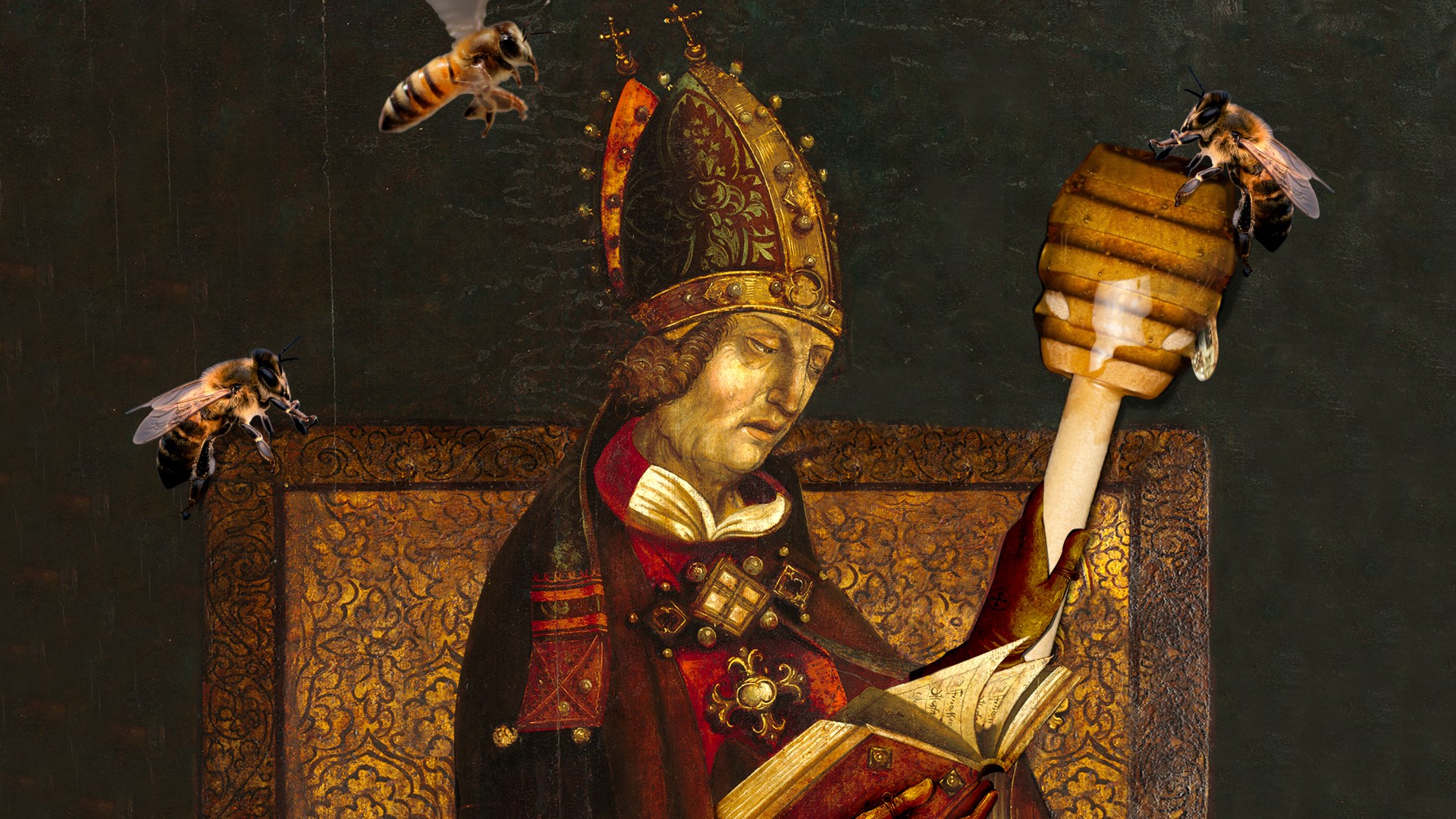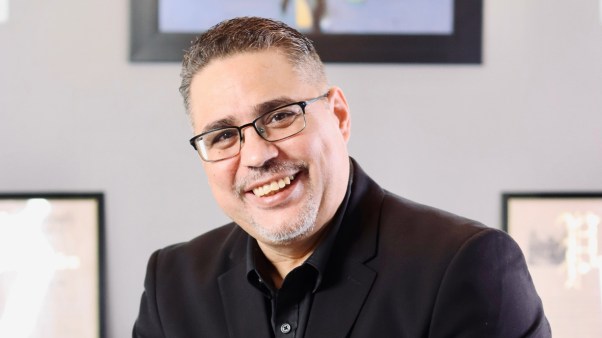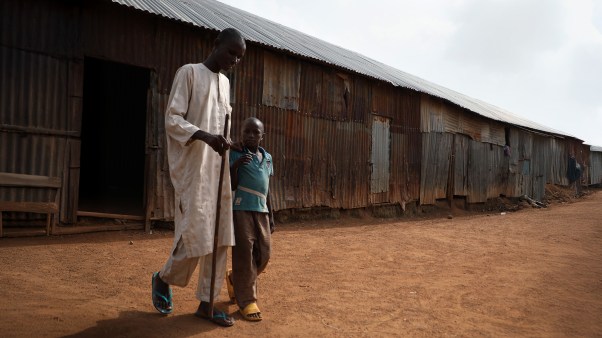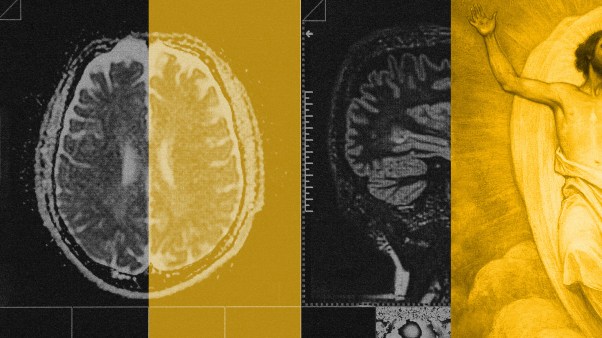As a lifelong Protestant, only recently have I begun to discover the delightful array of patron saints within the Catholic and Orthodox traditions. (And as my Episcopal friends would remind me, they have them too.)
There’s one for angina sufferers (Swithbert), flight attendants (Bona of Pisa), and embroiderers (Clare). There is a patron saint for those who survive an earthquake (Gregory the Wonderworker) and one for those who’ve misplaced items (Anthony). When I lost my voice for weeks on end last summer, I didn’t pray to Bernardine of Siena, but I did feel a real kinship with him—and a comfort in knowing that the church considered, named, and prayed for my plight.
My evangelical upbringing taught me a thorough knowledge of the Bible, but it was weak on Christian history and tradition. It was rare we spoke of anyone from the 2,000 or so years between the apostle Paul and Billy Graham.
At Wheaton College, I was introduced to Augustine, Thomas Aquinas, and Hildegard of Bingen—saints of the Catholic church, all. When I expressed concern, wondering why we were studying their teachings at an evangelical institution, a kindly professor quipped, “Courtney, before the Protestant Reformation, basically all Christians were Catholic or Orthodox.” Mic drop.
And so, on the cusp of Valentine’s Day, let us turn our attention to the spiritual wisdom to be gleaned from the saint whose name carries the day. A clergyman and physician in the third-century Roman empire, Valentine is the patron saint of courtly love, epilepsy sufferers—and beekeepers.
No one is certain when humans first decided to keep bees, cultivating hives rather than simply harvesting wild honey, but art depicting beekeeping has been found dating as far back as 2400 B.C. in Egypt. “It’s the second oldest profession,” joked Wayne Hughes, founder of Sweet Harmony Apiaries in Marietta, Georgia.
It is not uncommon for modern-day monasteries, convents, and Catholic missions to have apiaries. The Monastery of Christ in the Desert, a Benedictine community in Abiquiu, New Mexico, features beehives. St. Ignace de Loyola, a Jesuit school in Bedou, Haiti, includes beekeeping as part of its educational curriculum.
The Prince of Peace Abbey in Oceanside, California, hosted 50 hives under the supervision of Brother Blaise Heuke, a monk who invited children from the community to come harvest and sample honey for over four decades, until his death at the age of 80 in 2018.
The practice of apiculture is unique, requiring slow, careful movements, attention to detail, and a working knowledge of apiology, or the study of bees. “The keeping of bees is very tied to the contemplative,” said Christopher Russo, a high school English teacher, Baptist, and apiarist in Long Island, New York. “It’s quiet, slow work.”
Russo’s hobby has deepened his belief in the human responsibility to steward creation. “There’s this verse in Proverbs about a righteous person regarding the life of his animal,” he said, referencing Proverbs 12:10. “It’s my responsibility to take care of [the bees] well.”
He described the delight he experiences in witnessing his insects’ instinct and skill. “You talk about God’s design!” he said. “They have a language. A dance. They kind of wiggle to tell each other where the other flowers are. It’s just amazing to see how they operate.”
Hobby apiarist Anne Ferris serves as the director of short-term small groups at Ada Bible Church in Grand Rapids, Michigan. She finds inspiration in her bees’ collectivity. “[In winter] they stay in this cluster and beat their little wings to stay warm,” she said. “They rotate through so no one is on the outside for long. It’s absolutely fascinating how they work together as this unit.”
She drew a parallel to human communities: “[What] if humans could learn to work together like this?” she asked. “[What] if the church could learn to work together like this?”
For many an apiarist, beekeeping leads to a renewed interest in larger themes of creation care. Bees are both resilient—surviving brutally cold winters even though they do not hibernate—and fragile. Pesticides, severe weather, and diseases like colony collapse disorder threaten their longtime survival. Beyond the obvious tragedy of losing any animal to extinction, beekeepers say we should all have a vested interest in maintaining healthy bee populations. And as Ferris put it, “If we don’t have bees, we don’t have food.”
Robert Brown, a Presbyterian, lives in Oklahoma where he watches over his hives with help from a neighbor. “I don’t sell honey,” he said. “I give it away. I just tell everybody that I equate it with grace. It’s nothing I did to deserve it, and so I just give it to other people because … it’s not deserved. And it’s sweet.”
Brown, an agricultural economist by trade, marvels at the complexities within his hives as well as within each individual bee itself. “God’s created these little tiny creatures that [themselves] create complex carbohydrates. They create hydrocarbons—which just blows my mind. Beeswax is a hydrocarbon. It actually burns!”
Wayne Hughes began beekeeping on his family farm just over a decade ago. He is in the process of joining the Greek Orthodox church and, as part of his conversion, was invited to choose a patron saint.
His choice? Modomnoc, an ancient beekeeping monk who followed his bishop’s order to sail from Wales back to Ireland. Tradition says Modmonoc said goodbye to the bees he’d tended at his Welsh monastery, but they then followed him across the sea. “I thought about choosing Saint Valentine,” Hughes admitted, “but it was Saint Modomnoc who actually kept bees.”
Hughes says beekeeping has deepened his appreciation for the interconnectedness of all living things.
“Just seeing a beehive at work—it fills you with awe and wonder about the complexities of God’s creation,” said Hughes. “You could argue that it’s the body of Christ on full display because as a bee develops, they do different jobs. There are nurse bees, … housecleaning bees, … guard bees, … foragers. It’s everybody doing their part and everybody working together in complete harmony.”
Eighteenth- and 19th-century English folklore taught that bees belonged to the families of their keepers not simply as possessions, pets, or farm animals but as valued members of the family. When a major life event such as a birth, marriage, or death occurred, the beekeeper would make sure to inform the bees. This tradition was in full display in 2022. When Queen Elizabeth II died, Buckingham Palace’s beekeeper, John Chapple, was required by tradition to inform the bees.
This tender—albeit perhaps a touch superstitious—custom of paying attention and respect to these small, winged insects offers us an insight into creation care. Stewardship over the earth and its creatures is commanded by God. This biblical imperative reminds us of the interconnectedness of the created world and the loving Creator who spun it all into being. Creation care can be an exercise in joyful communal purpose as we, like the bees, each take up the unique task before us.
Look at the birds, Jesus tells the gathered crowd during his Sermon on the Mount. Consider the lilies. He used examples from the flora and fauna around him to draw larger lessons of God’s provision and care. But his first command was simple: Pay attention to creation. Lift your eyes and tilt your ears to notice nature—to appreciate the beauty, intricacy, fragility, and wonder of all that God has made.
Let this Valentine’s Day be an invitation for each of us to extend the deep love of God to one another—and the chance for us to enjoy and steward the earth God created.
Courtney Ellis is a pastor, birder, host of The Thing with Feathers podcast, and author of Present: The Gift of Being All In, Right Where You Are (Tyndale House).










